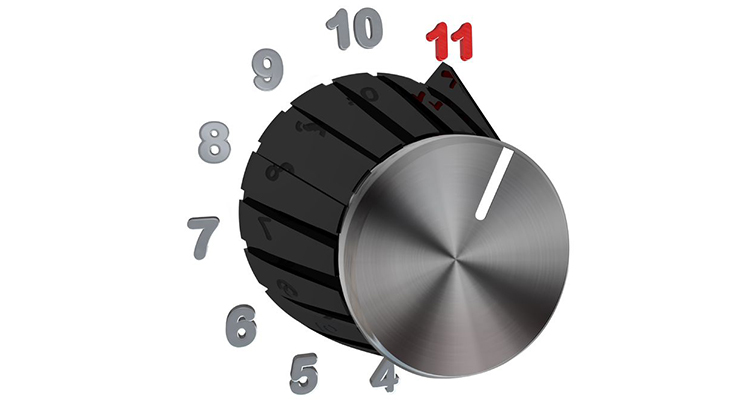Become Multidisciplinary or Else

It’s time to fire up the legendary waaaay-back machine once again to go to the year 1982.
Why?
Because it was in that year that the National Sound Contractors Association was formed and held its first convention/meeting. (On a side note, that was also the year I launched Sound & Video Contractor Magazine (S&VC) and attended that first NSCA show). Three and a half decades ago what we call integrators today called themselves sound contractors, because AUDIO is what they did (by and large).
Within a decade, they became the National SYSTEMS Contactors Association, a name change that a bit belatedly reflected the substantial shift in kind of business the member companies were doing and the way it was being done. On the same timeline, InfoComm, which started much earlier, was undergoing its own adjustments to the changing business landscape. Just for reference here is a short timeline:
- 1939 – National Association of Visual Education Dealers (NAVED) was organized by a group of eight AV dealers
- 1949 – NAVED merged with the Allied Non-Theatrical Film Association to become the National Audio-Visual Association or NAVA
- 1983 – The name is changed to the International Communications Industries Association® (ICIA)
- 2005 – The association becomes InfoComm International, and its massive ( 40K attendees) trade show becomes simply InfoComm
NOTE: For a fascinating historical tour through the world of AV, go here.
A Name Change That Reflected the Substantial Shift in the Kind of Business the Member Companies Were Doing
If you take the 30,000 foot view of all of this, it rapidly becomes obvious that the changes in the market(s) and the evolution of the associated technologies’ led the changes in identity and focus for the associations and their member companies, often by quite a large span of time.
Or from the opposite side of the state of affairs, providers trailed the technologies and customer perceptions with their market identities, often leading to either confusion among the potential buyers of services and products or worse the slow failure of the companies because they did not re-identify themselves to match the changes taking place. (Want proof? Check out the membership list for NSCA 1990 and again in 2005 and see how many companies made the transition successfully.)
It’s pretty hard for a potential client to choose a company for a multi-disciplinary project (audio, video, control, etc.) if the company positions itself to them as a ‘sound contractor’ while the competition has re-branded as a ‘systems integrator.’ Think about it! If you were the potential buyer, which of those identities would you consider first?
Providers Trailed Customer Perceptions With Their Market Identities
Why does this branding/positioning matter? Because, as the markets we serve evolve and change, our services and capabilities mix MUST change with them. Don’t take the upheaval such transformation will cause lightly.
Change is hard and often exceedingly difficult for an entrepreneurially founded company (which would encompass the vast majority of our industry’s companies both ‘integrators’ and manufacturers) to implement or even attempt. It is natural for ownership to become comfortable with the way things were, and believe it is still the way things are, especially if business is still coming through the front door.
For a highly revealing example of what happens when change does not occur in sync with the customer base, look no further than the once massively dominant retail electronics and appliance chains. Remember Circuit City, or Tweeter, Federated, The Good Guys, Crazy Eddie, CompUSA, Incredible Universe and Ultimate Electronics? Add in more recent collapses like that of HH Gregg or Vanns. Those names are gone, but the shifting landscape has also produced massive shrinkage in once top-ranked household names like Sears (close to the edge at best), K-Mart (even closer if not falling off the edge), Radio Shack (“re-structured”), Macy’s, Kohl’s and dozens of smaller regional chains.
We’re talking billions of dollars in valuation and thousands of jobs that simply disappeared and uncountable numbers of broken leases, abandoned buildings and nearly vacant malls.
RJ Hottovy, a consumer equity strategist for the giant investment research and management firm Morningstar, said recently he’s expecting an increasing number of retailers to file for bankruptcy, in addition to mass store closures driven by losses from massive expansions which produced large numbers of unprofitable stores and the rise of e-commerce.
The statistics are staggering. According to 2015 federal statistical data, the US has 23.5 square feet of retail space per person, compared with 16.4 square feet in Canada and 11.1 square feet in Australia — the next two countries with the highest retail space per capita.
When an anchor store like Sears or Macy’s closes, it often triggers a “downward spiral in performance” for shopping malls, noted the same Morningstar analysts. The malls don’t only lose the income and shopper traffic from that store’s business. The closure often triggers “co-tenancy clauses” that allow the remaining mall tenants to exercise their right to terminate their leases, causing a cascading decline, and the eventual explosion of “vacant, for rent or lease” signs followed by the sound of heavy machinery (or more spectacularly, explosives) demolishing the locations.
Think about the last time you were driving around a once thriving retail core and the vast expanses of now vacant land or boarded up buildings that now occupy that location. Those colossal numbers of empty storefronts and vacant malls should serve as a powerful warning of what happens when businesses ignore change or fail to recognize evolutionary patterns.
Our industry is at a tipping point as well. Let’s look at the letters for a moment. Once we were A for audio, then we became AV for audio/video and more recently we are defining ourselves as AV/IT, for audio/video/information technology, and we should probably include AV/IT/IP, to represent the inevitable merging of portions of the ubiquitous ‘internet of things’ into our required capability portfolios. And let’s not forget the security/access control/VoIP technologies that many clients (or their IT department’s purchasing staff’s who increasingly control our destinies) assume are our responsibility as well.
If you haven’t looked at your business and its visible “branding” in a while, it’s essential that you do so. If you are not presenting your potential customers/clients/buyers with a clear and cogent statement of your core competencies and available expertise, you are automatically forcing them to look for someone who has.
You will never know about those folks in an IT department sitting at their desks looking out through their internet window at your website or your industry ID. If you don’t grab eyeballs when they are looking, you won’t get a second chance!
The need to present a multi-disciplinary face to the wide-wide world is no longer an option, it’s a survival technique. Vertically integrated purchasing is a strongly embedded mantra in the new generation of buyers and technology managers. They don’t want five suppliers/partners — they want ONE! They want single point responsibility and a solid primary point of contact for the entire project’s technology infrastructure. They don’t hire multiple contractors for anything else, so why should you expect them to divide up the required technology into comfortable for you sections?
It won’t happen!
If you and your business are to grow and prosper in the ever evolving integration market(s) you MUST evolve and expand to offer a full service capability to every client. Obviously, each client’s needs will differ, but if you do not explore WITH them what their entire project scope is and refine your offering to match their requirements, they will seek alternative partners who can.
The number and type of “disciplines” you will need to provide will have to flex with the market forces and your own internal resources, but, the necessity to become a ‘more than just’ type of supplier is critical to establishing long term profitable relationships with the complex and intricate changes within the client’s own businesses. You can absolutely guarantee that what they need today, will be vastly different from what they need next year or even next month in some cases. Your agility is your strength. Time to stretch those mental muscles and get growing.
So, if you’re not a multi-faceted, multi-capability provider now, it’s almost past time to become one. Look at yourself through the client’s eyes and see if you present the kind of ‘we got this!” statement they are looking for.





